| Reviews & Columns |
|
Reviews DVD TV on DVD Blu-ray 4K UHD International DVDs In Theaters Reviews by Studio Video Games Features Collector Series DVDs Easter Egg Database Interviews DVD Talk Radio Feature Articles Columns Anime Talk DVD Savant Horror DVDs The M.O.D. Squad Art House HD Talk Silent DVD
|
DVD Talk Forum |
|
|
| Resources |
|
DVD Price Search Customer Service #'s RCE Info Links |
|
Columns
|
|
|
Happy People: A Year in the Taiga
THE MOVIE:
"Come to think of it, we are all killers and accomplices. Even those people who are kind-hearted tend to pity everything."
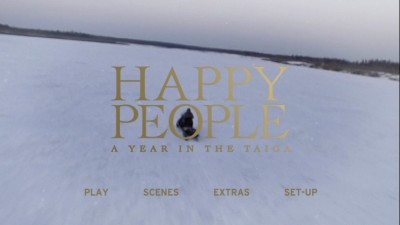
The latest documentary from Werner Herzog, Happy People: A Year in the Taiga, is not exactly a completely new piece of work from the director, at least in as much as it's not a movie he originally went off and shot himself. Rather, Happy People started life as a four-part, four-hour program from Russian director Dmitry Vasyukov. Each section detailed a different season in the region of the Siberian wilderness called Taiga. Vasyukov followed hunters and trappers who live there, filming how they lived their lives in what most would consider fairly harsh conditions. Each portion of the year is spent preparing for the next. It's an ongoing cycle of survival.
Herzog took the four hours and edited it down to 90 minutes, adding new music and recording his own narration geared toward making life on the frozen plains understandable to non-Russian audiences. In typical Herzog fashion, his focus is on the individual and how he or she interacts with the natural world. He mainly keeps the attention on two seasoned trappers (one of them a descendent of filmmaker Andrei Tarkovsky), with a brief excursion to look at how the few remaining indigenous people from the region carry on in modern day. Amidst this, we see the animals that these men hunt and eat and trade, and perhaps most importantly, the relationship a hunter has with his dogs. In both the eyes of the trappers and the outsiders observing their existence, the canines are the true heroes of this story.
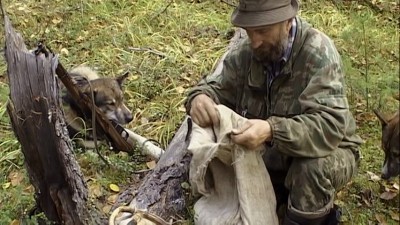
Happy People starts in Spring as the early thaw is beginning, and it works its way back around to just before the next year picks up at the spot we originally began. In between, we see the important tasks for life on the Taiga: making skis, securing supplies, building boats, setting traps, etc. We are within spitting distance of the end of Happy People before we see any of the participants do anything remotely resembling fun. All the trappers return to their village and loved ones for Christmas, but otherwise, Herzog shows their lives as solitary endeavors. Over the course of Happy People, you might find yourself asking why these folks carry on as they do. They show no signs of pursuing material possessions, nor do we see even a hint of what we would consider commonplace pop-culture trappings. It's tough not to look at the footage with our own cultural filter and wonder just what the hell these guys are working so hard for. Do they slog through difficult weather merely to scrape together enough sustenance to do it all again the next year?
The answer, of course, is yes, and how we accept and interpret that affirmative response will say a lot about each of us as an audience member. The intent of Happy People is two-fold: first to record a way of life that has not otherwise been preserved on film (and show skills and traditions that are being lost to time), and second to challenge our notion of what it means to be happy. The title Happy People is not ironic. The residents of the Taiga are content with their labor and what its fruits afford them. They don't moan about lacking unnecessary luxury items or worry about celebrity side boob and baby bumps. When a politician comes upriver seeking votes, they pay his campaigning no mind. They have what they need and they lack the outside pressure that tells them it is not enough. It's amazing how little you require when you remove urban anxiety and neuroses and actually go after those requirements with your own two hands.
In his introduction to the film elsewhere on this DVD, Herzog share an anecdote about the main trapper in Happy People. When he heard there was going to be this version of the film and it was going to be shown around the world, he worried that it would inspire pity. The man wanted to be sure the no one felt sorry for the people of the Taiga, and that everyone seeing the documentary knew they liked the way they lived. Having seen Happy People, I think the trapper has it backwards: it's we who should be worried that the hunters of the Taiga pity us.
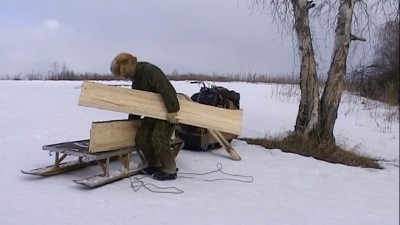
THE DVD
Video:
Happy People is shown in widescreen, 16x9. The picture quality is mostly good with nicely realized colors and strong resolution. Some scenes are softer, but this is a byproduct of the original source. Happy People had been shot originally as a more modest presentation and has been upgraded for this international release.
Sound:
In terms of audio, DVD viewers have three options: original Russian language for the subjects, as recorded when the film was shot, with Herzog's voiceover in English; everything dubbed in English; or the entire film in German. All options are in 5.1 Dolby Digital. The soundtrack mainly kicks in when there is some kind of interesting natural occurrence.
Subtitle options are in English, and are either for just the Russian portions, or you can also turn on a version that captions the narration.
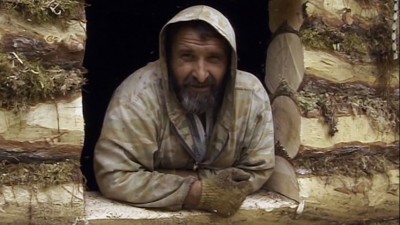
Extras:
Werner Herzog provided a 6-minute introduction, recorded live at a film festival. It's a swift, informative primer to the origins and intentions of the project. He explains how he first saw Dmitry Vasyukov's original films and how he went about putting this edit together.
7 minutes of the original edition of the Spring portion of Vasyukov's Happy People is also included to give viewers an idea of the work Herzog put into transforming the feature. Vasyukov's production looks more like a public TV presentation--which isn't a knock. It's more about unvarnished education. Trust me, it'll make sense when you watch it. The difference in picture quality is striking. One odd complaint: the narration is in English here, yet there are no subtitles for the Russian dialogue. If you've watched the main feature, you've seen the scenes already, but it still would have been nice to have them subtitled again.
Chasing Spring in West Siberia is a companion documentary clocking in at an hour and 10 minutes. This is another Russian production with English narration. Again, it's more straightforward than Happy People, but it also captures a wider range of experience.
For more info about the region, there is an animated section with text-based facts and trivia.
The film's theatrical trailer is also included.
FINAL THOUGHTS:
Highly Recommended. This no-nonsense documentary captures twelve months of life on the Siberian tundra in a manner that is both informative and philosophically illuminating. Werner Herzog has refashioned a four-hour Russian documentary into the 90-minute Happy People: A Year in the Taiga. The film details four seasons in the life of a couple of hunters and trappers, showing how they work their trade and the harsh necessities of the same. It's a rough existence, but a simple one, and slowly Herzog reveals how these dedicated men are perhaps more connected to the world around them than the rest of us simply by being a more active part of it.
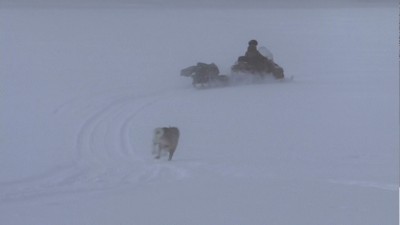
Jamie S. Rich is a novelist and comic book writer. He is best known for his collaborations with Joelle Jones, including the hardboiled crime comic book You Have Killed Me, the challenging romance 12 Reasons Why I Love Her, and the 2007 prose novel Have You Seen the Horizon Lately?, for which Jones did the cover. All three were published by Oni Press. His most recent projects include the futuristic romance A Boy and a Girl with Natalie Nourigat; Archer Coe and the Thousand Natural Shocks, a loopy crime tale drawn by Dan Christensen; and the horror miniseries Madame Frankenstein, a collaboration with Megan Levens. Follow Rich's blog at Confessions123.com.
|
| Popular Reviews |
| Sponsored Links |
|
|
| Sponsored Links |
|
|
| Release List | Reviews | Shop | Newsletter | Forum | DVD Giveaways | Blu-Ray | Advertise |
|
Copyright 2024 DVDTalk.com All Rights Reserved. Legal Info, Privacy Policy, Terms of Use,
Manage Preferences,
Your Privacy Choices | |||||||













